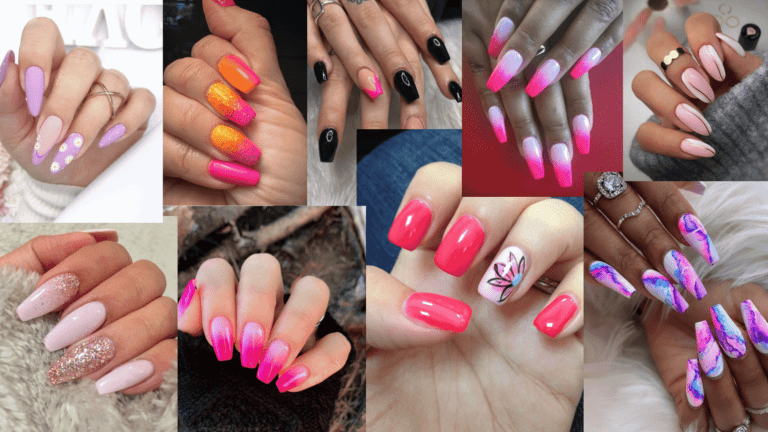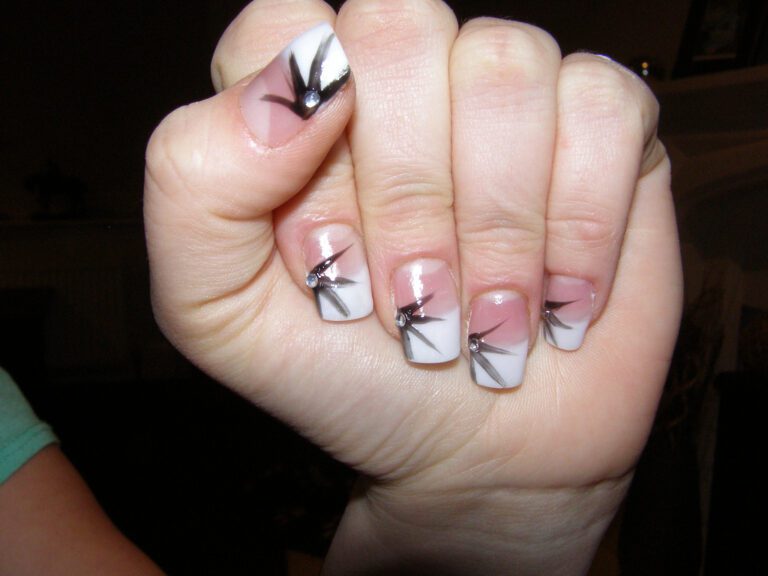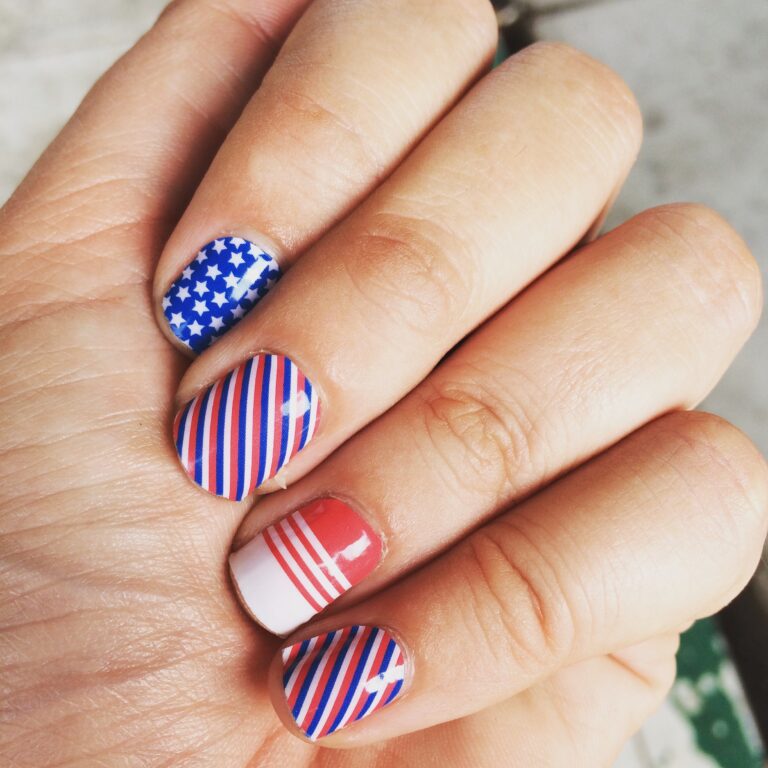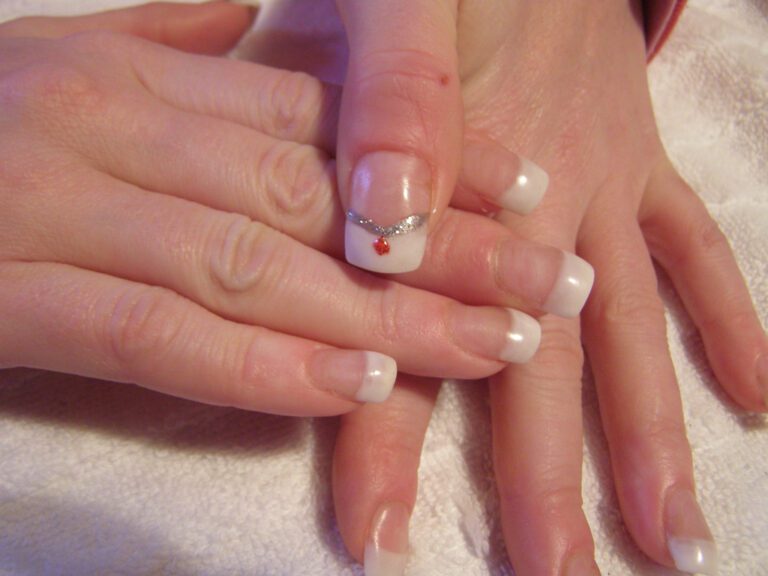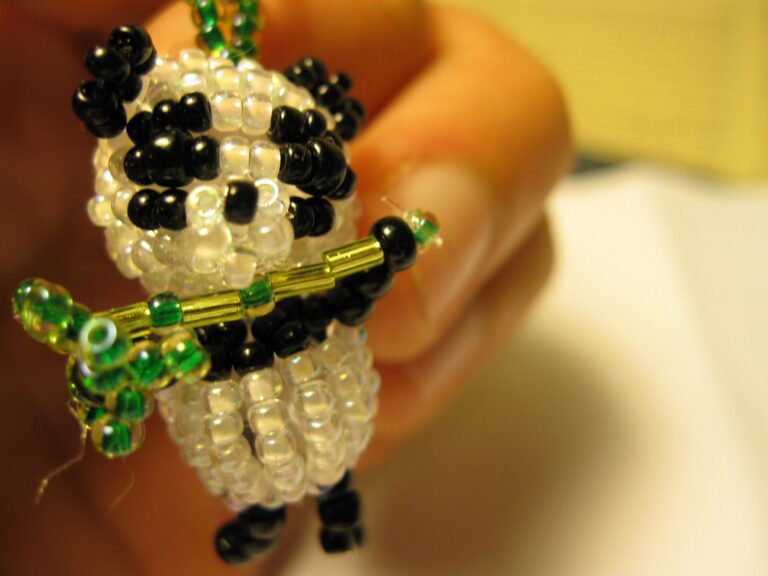“Green Enigma: When Nails Turn Green Unraveled”
Green nails can be a perplexing and unsettling phenomenon, often leaving individuals puzzled and concerned. This article delves into the science behind green nail syndrome, explores clinical presentation and diagnosis, navigates treatment options, discusses prevention strategies and best practices, examines the psychological impact of nail discoloration, and delves into case studies and clinical research. Understanding the causes, symptoms, and treatments of green nails is crucial for promoting awareness and dispelling misconceptions.
Key Takeaways
- Green nails can be caused by bacterial infections, fungal infections, or environmental factors such as exposure to copper.
- Effective treatment options for green nails include topical antifungal medications, oral antibiotics, and proper nail care practices.
- Preventing green nails involves maintaining good personal hygiene, avoiding prolonged exposure to water, and protecting nails from harsh chemicals.
- The psychological impact of green nails can lead to social stigma and negative self-perception, highlighting the importance of emotional support and coping mechanisms.
- Clinical research is essential for advancing our understanding of green nail syndrome and developing innovative treatment approaches.
Unveiling the Mystery of Green Nails

The Science Behind the Green Hue
The perplexing green discoloration of nails, often referred to as green nail syndrome, is typically caused by a bacterial infection. The primary culprit is Pseudomonas aeruginosa, a common bacterium that thrives in moist environments and can infiltrate the space between the nail plate and the nail bed. When this bacterium proliferates, it produces a pigment called pyocyanin, which imparts the characteristic green color.
Factors contributing to the development of green nail syndrome include prolonged exposure to water, minor nail injuries, and the use of artificial nails. These conditions create an ideal breeding ground for the bacteria. It’s important to note that while the green coloration may be alarming, it is usually not indicative of a serious health issue.
Tip: Keeping nails dry and clean is essential in preventing the growth of Pseudomonas aeruginosa and the subsequent green hue.
The diagnosis of green nail syndrome is often made clinically, but laboratory confirmation can be obtained through bacterial cultures. Treatment typically involves improving nail hygiene, avoiding excessive moisture exposure, and in some cases, using topical or oral antibiotics.
Common Causes of Green Nail Syndrome
Green Nail Syndrome (GNS), clinically known as chloronychia, is often a telltale sign of an infection by the bacterium Pseudomonas aeruginosa. This opportunistic pathogen thrives in moist environments, making chronic exposure to water a significant risk factor. Other common causes include:
- Prolonged use of acrylic nails or nail enhancements
- Frequent contact with soaps, detergents, or harsh chemicals
- Onychotillomania (compulsive nail-picking or biting)
- Microtrauma to the nail or nail fold, which can occur from manicures or everyday activities
Prevention is key in managing GNS. Maintaining dry, clean nails and minimizing exposure to potential irritants can help reduce the risk of developing this condition. For those in professions that require constant hand-washing or glove use, such as healthcare workers, it’s crucial to ensure hands are thoroughly dried after exposure to moisture.
Tip: If you notice any green discoloration on your nails, it’s advisable to consult a healthcare professional promptly to prevent further complications.
The Role of Bacterial Infections
Bacterial infections are a primary culprit in the development of green nails, often caused by the Pseudomonas aeruginosa bacterium. This opportunistic pathogen thrives in moist environments and can infiltrate the nail bed through minor cuts or a separation between the nail and nail bed, known as onycholysis.
When Pseudomonas sets in, it produces a pigment called pyocyanin, which imparts the characteristic green color. Not all green nails are due to bacterial infections, but when they are, it’s crucial to address the infection promptly to prevent further complications.
Tip: Keeping nails dry and clean is essential in preventing Pseudomonas infections.
Treatment typically involves a combination of antiseptic soaks and topical antibiotics. In more severe cases, oral antibiotics may be necessary. It’s important to consult a healthcare professional for an accurate diagnosis and appropriate treatment plan.
Clinical Presentation and Diagnosis

Identifying Symptoms and Signs
The journey to understanding green nail syndrome begins with recognizing the symptoms and signs that accompany this condition. Patients typically report a distinct greenish discoloration of the nail plate, which may be accompanied by other changes in the nail’s appearance. It is crucial to observe the following indicators:
- Discoloration: A green hue that may vary in intensity from light to dark shades.
- Nail texture changes: The presence of thickening or brittleness.
- Odor: An unusual smell may emanate from the affected nails.
- Detachment: The nail may separate from the nail bed, a condition known as onycholysis.
Tip: Early detection and consultation with a healthcare professional can significantly improve the prognosis of green nail syndrome.
In addition to visual examination, patients may report subjective symptoms such as discomfort or pain around the nail area, especially when pressure is applied. It is important to differentiate these signs from other nail disorders to ensure accurate diagnosis and treatment.
Diagnostic Procedures and Tests
To confirm the diagnosis of green nail syndrome (GNS), a multifaceted approach is employed. Initially, a thorough clinical examination is conducted to observe the characteristic green discoloration that suggests a Pseudomonas aeruginosa infection. Subsequently, laboratory tests play a pivotal role. A nail clipping is taken for microbiological culture to identify the specific bacterial strain. This is crucial as it guides the selection of an appropriate antibiotic.
In addition to culture, other tests may include:
- KOH preparation to rule out fungal infections
- Periodic acid-Schiff (PAS) staining to detect any fungal elements
- Nail bed biopsy in atypical cases or when treatment fails
Tip: Always consult a healthcare professional if you notice any changes in nail color or texture, as early diagnosis can prevent further complications.
Differential Diagnosis: Separating Fact from Fiction
When it comes to diagnosing green nails, it’s crucial to distinguish between the various potential causes to ensure accurate treatment. A differential diagnosis involves a systematic method of ruling out conditions that present with similar symptoms. For green nail syndrome, this means considering other nail disorders that may mimic the green discoloration caused by bacterial infections.
Key factors in differential diagnosis include the patient’s history, the appearance of the nail, and any accompanying symptoms. For instance, fungal infections, trauma to the nail, and underlying systemic conditions can all lead to changes in nail coloration. It’s essential to consider these factors:
- The duration and progression of the nail discoloration
- Any recent exposure to chemicals or irritants
- The presence of nail damage or injury
- Signs of systemic illness
Tip: Always consult a healthcare professional if you notice any changes in your nail color or condition, as early diagnosis can prevent further complications.
Navigating Treatment Options

Topical Treatments and Their Efficacy
The battle against green nail syndrome often begins with topical treatments, which are applied directly to the affected nails. These treatments range from antifungal lacquers to antibiotic solutions, each with its own set of pros and cons.
Antifungal lacquers, such as ciclopirox (Ciclodan, Penlac Nail Laquer), are commonly prescribed due to their ease of use and ability to form a protective layer over the nail. However, their effectiveness can be limited by the depth of the infection. For superficial infections, these lacquers can be quite effective.
Antibiotic solutions, on the other hand, target bacterial infections that may cause the nails to turn green. A gentle formula, like the one found in Pronto Rejuvenating treatment, can help in restoring the nail’s health without harsh chemicals.
Tip: Consistency is key when using topical treatments. Apply as directed and continue treatment for the recommended duration to see the best results.
When considering over-the-counter options, products containing efinaconazole (Jublia) and tavaborole (Kerydin) have shown promise. It’s important to note that while some treatments can be purchased without a prescription, a healthcare provider’s guidance is invaluable in ensuring the right treatment for your specific condition.
Oral Medications: Risks and Benefits
When it comes to treating green nail syndrome, oral medications are often considered a potent option. These systemic treatments can be particularly effective when topical applications fail to penetrate the nail bed sufficiently. However, the use of oral medications comes with its own set of risks and benefits.
Benefits of oral medications include their ability to treat the infection from within, reaching areas that topical treatments cannot. They often provide a faster resolution of the symptoms and are convenient for patients who may not adhere to topical treatment schedules.
On the other hand, the risks associated with oral medications should not be overlooked. These can include side effects such as gastrointestinal discomfort, allergic reactions, and potential interactions with other drugs. Moreover, long-term use of certain oral antifungals can lead to liver toxicity, necessitating regular monitoring of liver function.
Tip: Always consult with a healthcare professional before starting any oral medication for nail infections to ensure it is appropriate for your specific condition and to discuss potential side effects.
Patients should weigh these factors carefully, considering both the severity of their condition and their personal health history, before deciding on an oral treatment plan.
Alternative Remedies and Preventative Measures
When it comes to addressing green nail syndrome, proper hygiene is crucial for preventing and managing the condition. Regularly cleaning and drying the nails, especially after exposure to moisture, can help reduce the risk of bacterial and fungal infections. Additionally, maintaining a balanced diet rich in essential nutrients, such as vitamins and minerals, can support overall nail health. It’s important to note that these measures are not a substitute for professional medical advice and treatment.
Prevention Strategies and Best Practices

Personal Hygiene and Nail Care
Maintaining personal hygiene is paramount in preventing green nail syndrome. Regular and thorough washing of hands can significantly reduce the risk of bacterial infections that cause nails to turn green. It’s essential to keep the nails dry and clean, as moisture can create an ideal environment for bacteria to thrive.
Proper nail care involves more than just aesthetics; it’s about health. Trimming nails regularly and keeping them at a manageable length prevents the accumulation of dirt and bacteria. Using your own nail care tools, such as clippers and files, is advisable to avoid cross-contamination, especially when visiting nail salons.
Tip: Always bring your own nail care kit to the salon to ensure the highest level of hygiene.
Incorporating these practices into your daily routine can safeguard your nails against discoloration and infection:
Environmental Factors and Occupational Hazards
The health of our nails can be significantly influenced by the environments we frequent and the work we do. Prolonged exposure to certain chemicals, for example, can lead to the development of green nail syndrome, a condition often seen in individuals who are in regular contact with detergents, solvents, or swimming pools. It’s crucial to understand that these environmental factors can act as catalysts for nail discoloration and other related conditions.
Occupational hazards are another critical aspect to consider. Jobs that involve constant hand-washing or the use of protective gloves can create a moist environment conducive to bacterial growth. Here’s a list of occupations that may increase the risk of developing green nails due to such hazards:
- Healthcare workers
- Cleaners and janitors
- Swimmers and pool attendants
- Bartenders and dishwashers
Tip: To mitigate these risks, it’s advisable to wear gloves when possible and ensure they are dry inside before use. Additionally, taking breaks from prolonged exposure to water or chemicals can help preserve nail health.
It’s not just the chemical exposure that’s a concern; physical trauma to the nails can also predispose individuals to infections. Minor injuries can create entry points for bacteria, leading to discoloration and other symptoms. Therefore, it’s essential to be mindful of both the chemical and physical aspects of our environments and occupations.
Educating the Public: Awareness and Misconceptions
When it comes to green nail syndrome, public education is crucial in both preventing the condition and eradicating common misconceptions. Misinformation can lead to unnecessary anxiety and inappropriate treatments. It’s important to highlight that green nails are often caused by a bacterial infection, specifically Pseudomonas aeruginosa, and not by fungus as is commonly believed.
To effectively educate the public, a multi-faceted approach is necessary. This includes:
- Disseminating accurate information through community health programs.
- Encouraging individuals to seek professional medical advice rather than self-diagnosing.
- Promoting proper nail care and hygiene practices to prevent bacterial colonization.
Tip: Always dry your hands thoroughly after washing to reduce the risk of bacterial growth under the nails.
By addressing these key points, we can foster a better understanding of green nail syndrome and promote healthier nail care practices among the general population.
The Psychological Impact of Nail Discoloration

Social Stigma and Self-Perception
The discoloration of nails, particularly when they turn green, can have a profound impact on an individual’s self-perception and social interactions. The stigma associated with unusual nail appearances often leads to feelings of embarrassment and a desire to hide the affected nails. This self-consciousness can stem from the fear of being judged or perceived as unclean or unhealthy by others.
Social stigma can manifest in various forms, from subtle shifts in behavior by peers to more overt forms of discrimination. Individuals may find themselves the subject of unwanted attention or questions regarding their nail health, which can exacerbate feelings of isolation or anxiety. It’s important to recognize that the psychological effects of nail discoloration are significant and warrant compassionate understanding.
Remember: The impact of nail discoloration on self-esteem is real and should be addressed with sensitivity and support.
Coping Mechanisms and Support Systems
Coping with the psychological impact of nail discoloration can be challenging, but it’s important to remember that you are not alone. Seeking support from friends, family, or support groups can provide a sense of belonging and understanding. Additionally, practicing self-care and mindfulness techniques can help manage stress and anxiety, contributing to an overall sense of well-being. Remember to prioritize your mental and emotional health as you navigate the journey of coping with nail discoloration.
For those seeking professional guidance, consider the following coping skills:
- Problem-focused coping
- Emotion-focused coping
- Religious coping
- Meaning-making
- Social support
These coping skills can provide valuable tools for managing the emotional impact of nail discoloration. Remember, it’s okay to seek help and support when needed.
Remember to prioritize your mental and emotional health as you navigate the journey of coping with nail discoloration.
Case Studies and Clinical Research

Analyzing Documented Cases
The exploration of documented cases of green nail syndrome provides invaluable insights into the condition’s prevalence, etiology, and response to treatment. A review of case studies reveals a pattern of Pseudomonas aeruginosa as a common culprit, with its distinctive green pigment, pyocyanin, often implicated in the discoloration.
Clinical observations underscore the variability in presentation, ranging from isolated green streaks to complete nail bed involvement. Factors such as prolonged exposure to water, nail trauma, and compromised immune systems frequently emerge as contributing elements.
Preventative measures, including proper nail hygiene and avoidance of excessive moisture, are repeatedly highlighted as critical in mitigating the risk of infection. The following list encapsulates key findings from various case studies:
- The presence of underlying health conditions, such as Terry’s Nails in systemic diseases.
- The impact of environmental factors, like fungal infections leading to discoloration.
- The non-significant effect of UV nail lamps on keratinocyte viability, suggesting a low risk of skin complications.
- The identification of Aspergillus infection as another cause of green nail discoloration alongside onychomycosis.
Tip: Early recognition and management of green nail syndrome are essential to prevent potential complications and to ensure effective treatment.
Recent Advances in Treatment Research
Recent research in the field of nail care has revealed promising developments in the treatment of green nail syndrome. Studies have shown that the use of ozenoxacin 1% cream has led to clinical and microbiological resolution of chloronychia, offering a potential topical treatment option for this condition. Additionally, collaborative efforts in research have focused on identifying vascular contributions to cognitive impairment and dementia (VCID), shedding light on the potential link between nail discoloration and systemic health. These advancements underscore the importance of interdisciplinary approaches and ongoing exploration of therapeutic options for green nail syndrome. As the field continues to evolve, it is crucial for individuals to stay informed about the latest drug therapy and treatment research, ensuring informed decisions and optimal nail care outcomes.
In the world of nail art, case studies and clinical research play a crucial role in advancing the field and uncovering new techniques and trends. At NAILinspire.com, we are dedicated to providing the ultimate online nail art design library, where nail artists, enthusiasts, and professionals can access a wealth of knowledge and inspiration. Whether you’re looking to stay updated on the latest research or seeking innovative design ideas, NAILinspire.com is your go-to destination. Explore our collection of case studies, clinical findings, and creative resources to elevate your nail art journey.
Frequently Asked Questions
What causes nails to turn green?
Green nails can be caused by a variety of factors, including bacterial infections, fungal infections, and exposure to certain chemicals or metals.
Is green nail syndrome contagious?
Green nail syndrome is not contagious and cannot be passed from one person to another.
How is green nail syndrome diagnosed?
Green nail syndrome is diagnosed through a physical examination of the nails, as well as laboratory tests to identify the underlying cause.
What are the treatment options for green nail syndrome?
Treatment options include topical antifungal medications, oral antifungal medications, and in severe cases, surgical removal of the affected nail.
Can green nail syndrome be prevented?
Preventative measures include practicing good nail hygiene, avoiding prolonged exposure to water, and wearing protective gloves when working with chemicals or irritants.
What are the psychological effects of green nail syndrome?
Green nail syndrome can cause distress and self-consciousness, impacting an individual’s self-esteem and social interactions.



